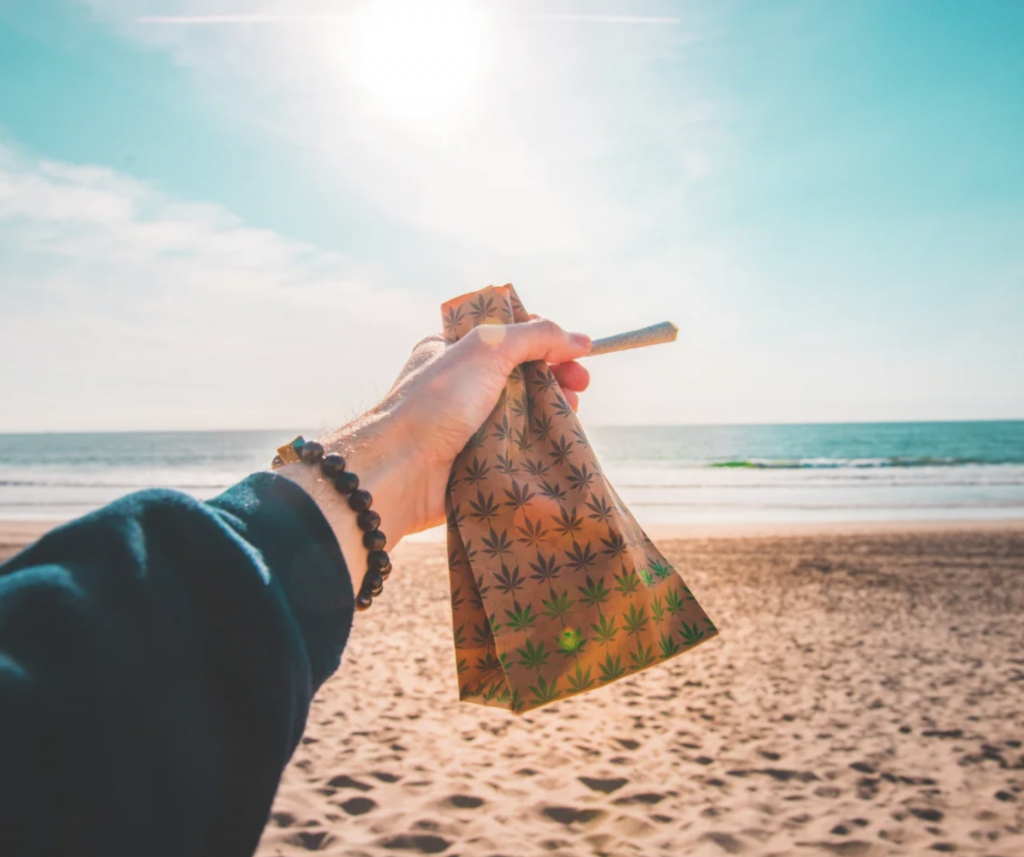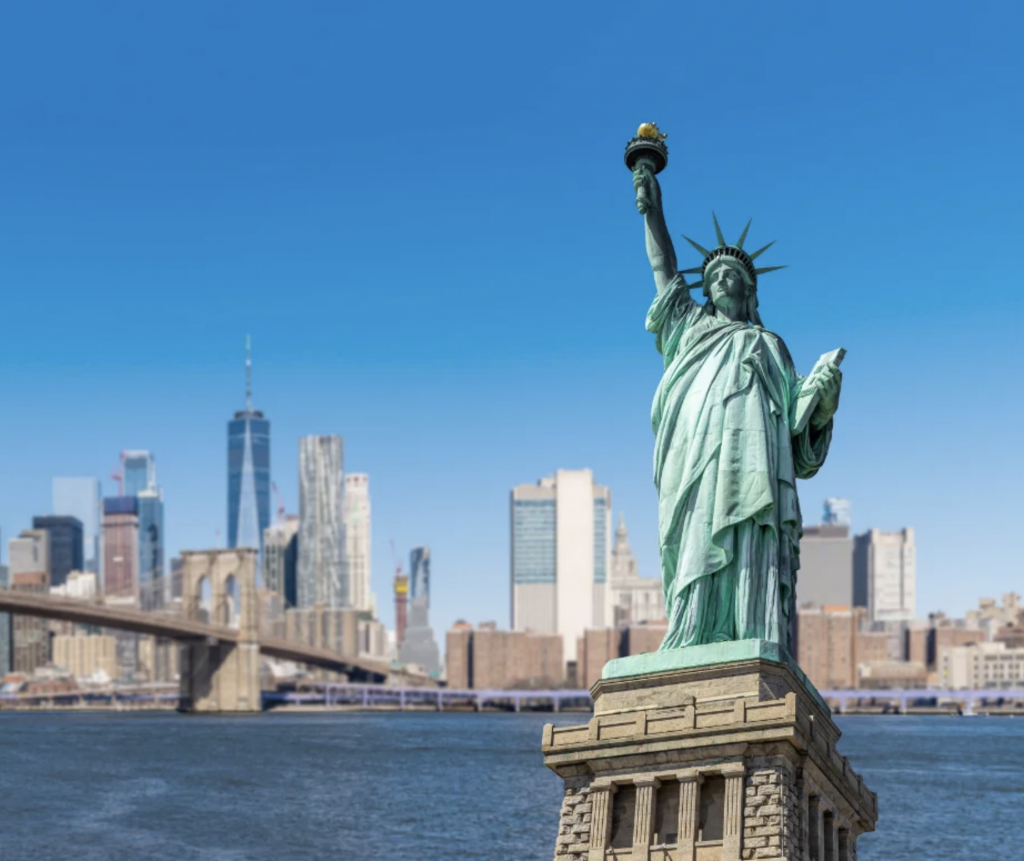
Recreational and medical cannabis have cultivated an enormous tourism industry. Current statistics estimate that cannabis tourism has brought in an estimated $17 billion so far, with no signs of slowing down. You might say that the cannabis tourism industry is a smoking hot one.
States such as California, New York, and ones in between like Ohio, Oklahoma, Pennsylvania, Missouri, and others are experiencing an influx of cannabis tourism. People want to go where they won’t get arrested for weed. Cannabis legalization help supports more than just cannabis sales. The tourism sparked by the legal cannabis industry helps countless businesses across the country. Visitors may come because of cannabis laws, but the majority of their money is spent on dining, accommodations, making memories, and souvenirs.
To really put a value on the cannabis tourism industry, you would have to account for all the spending that it helps to create. It’s kind of like throwing a rock in a calm body of water. The ripples will carry out across the entire body affecting it all. An increase in cannabis tourism helps to increase business in general. The increase in cannabis tourism is becoming clearly evident. So much, in fact, that it is making mainstream media.
In a recent article, Forbes estimated that the US cannabis tourism industry is worth around $17 billion. The US currently has an overall tourism economy that’s estimated to be a round of $1.2 trillion. That’s a lot of hotels, souvenirs, adventures, breakfasts, lunches, and dinners! Not to mention parking, gas, laundry, personal care, etc. When it comes to cannabis tourism, perhaps one of the hottest spots in the nation to visit is the west coast of California.
California Cannabis Tourism
Cannabis-based tourism in California is huge! Many people dream of taking a vacation to the Golden State to visit legendary cannabis cultivation hot spots such as the Emerald Triangle. The Emerald Triangle consists of three counties in California. Mendocino County, Humboldt County, and Trinity County make up this legendary triangle where some of the world’s best cannabis is said to come from.
Could you imagine going to California’s Emerald Triangle and touring one of these legendary places! For some people, it’s more than just something to imagine; it’s something they do. Cannabis tourism in California can range from anything like visiting cannabis growing operations to exploring dispensaries, cannabis lounges, and cannabis events or just enjoying some of California’s legendary sites while legally being allowed access to cannabis.
You could explore dormant lava tubes, journey through a forest of redwoods, or view giant sequoias along the coastline. Speaking of coastline, you could travel the Pacific Coastal highway as well, something that comes highly recommended by many. You could visit SeaWorld or even Disney! Just don’t try to smoke weed in SeaWorld or Disney, they kind of frown upon that still.
Both recreational and medicinal cannabis is legal in the state of California. This makes it an even more attractive location for adults looking to partake in a little wake and bake to start their day and/or some unwind and dine time to help bring it to an end. California, like many places with legal recreational cannabis laws, does face issues, though.
Even though cannabis consumption is accepted in many places, it’s still frowned upon in just as many. You are not legally allowed to consume cannabis in public. Discretion is key. You could find yourself facing a civil fine should you decide to fire one up on the beach or to walk down the streets in California. Wouldn’t it be cool if there was a place you could smoke a doobie in public just like a cigarette? You know it would! What if I told you that place exists?

New York is Going to be a Hit with Cannabis Tourism
When people go on a vacation where they have legal access to cannabis, they often fail to realize consuming it is still illegal in many places. Most hotels, Airbnbs, and other facilities do not allow cannabis consumption. When it comes to cannabis consumption and doing it legally, it is done in a private residence or away from the general public on private property, or in some places, cannabis-friendly establishments. Taking cannabis into federal and state parks is still a no-no. Blaze a joint on a trail and get caught by a park ranger, and you could face a fine depending on the ranger. This is true in many states, even those that require you to receive a medical cannabis recommendation.
Imagine if there was a place you could consume cannabis in public the way that you do tobacco or alcohol. Wouldn’t that be amazing? That place exists, and it’s called New York. New York definitely used to be known as not the spot for pot! NYPD had a reputation of just randomly searching people, detaining them, and more over the alleged smell of cannabis. The state of New York was a long-time supporter of federal marijuana prohibition. In recent years though, that has changed.
New York has quickly become a cannabis tourism hotspot thanks to a reverse position supporting outdated, archaic federal cannabis policy. Not only did New York legalize recreational and medical cannabis, but they also allow you to consume it in public.
That’s right; if you can walk down the road and smoke a cigarette, you can smoke a doobie! New York is setting up to become a mecca for cannabis tourism, with cannabis lounges and consumption facilities in abundance. Not only will cannabis be legal in New York, but it will also be legal to consume in many places too. This will be a major draw for cannabis tourism. I mean, after all, what good is it to have legal access to cannabis if you don’t actually have legal access to consuming it?
I know I’ve always wanted to take a trip to New York. Now that I know I can legally smoke a joint anywhere people can smoke a cigarette; I’m already looking at booking a trip! With cannabis tourism blazing across the nation, what will be your cannabis tourism destination of choice?
Disclaimer: The information, including but not limited to, text, graphics, images and other material contained in this article is for informational purposes only. No material from this article is intended to be a substitute for professional medical advice, diagnosis, or treatment. Always seek the advice of your physician or other qualified health care provider with any questions you may have regarding a medical condition or treatment before undertaking a new health care regimen. Never disregard professional medical advice or delay in seeking it because of something you have read on this website.
